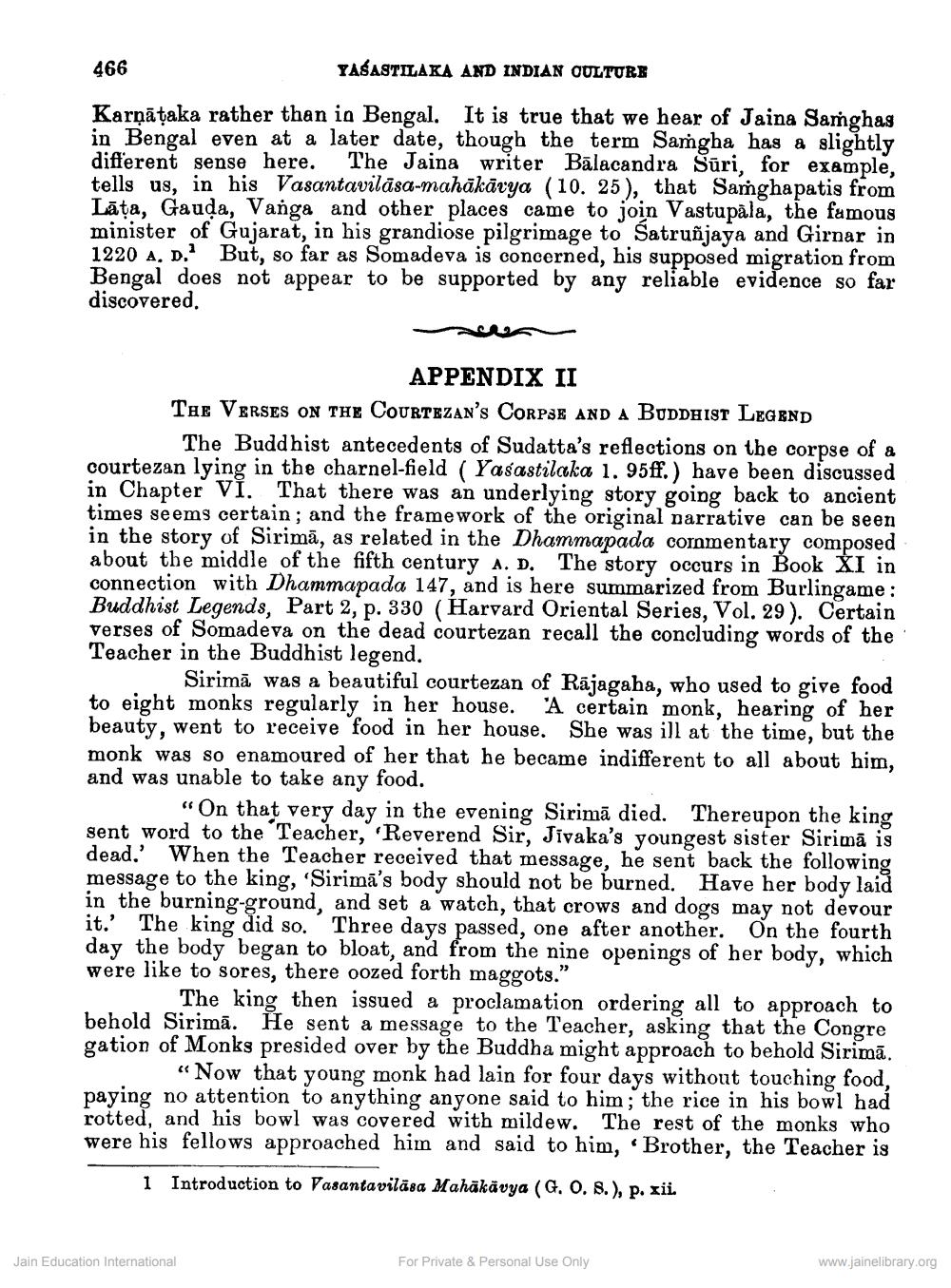________________
466
YAŠASTILAKA AND INDIAN CULTURE
Karnātaka rather than in Bengal. It is true that we hear of Jaina Samghas in Bengal even at a later date, though the term Samgha has a slightly different sense here. The Jaina writer Bālacandra Sūri, for example, tells us, in his Vasantavilāsa-mahākārya (10. 25), that Samghapatis from Lāta, Gauda, Vanga and other places came to join Vastupala, the famous minister of Gujarat, in his grandiose pilgrimage to Satruñjaya and Girnar in 1220 A. D. But, so far as Somadeva is concerned, his supposed migration from Bengal does not appear to be supported by any reliable evidence so far discovered.
APPENDIX II THE VERSES ON THE COURTEZAN'S CORPSE AND A BUDDHIST LEGEND
The Buddhist antecedents of Sudatta's reflections on the corpse of a courtezan lying in the charnel-field ( Yasastilaka 1. 95ff.) have been discussed in Chapter VI. That there was an underlying story going back to ancient times seems certain; and the framework of the original narrative can be seen in the story of Sirimā, as related in the Dhammapada commentary composed about the middle of the fifth century A. D. The story occurs in Book XI in connection with Dhammapada 147, and is here summarized from Burlingame: Buddhist Legends, Part 2, p. 330 (Harvard Oriental Series, Vol. 29). Certain verses of Somadeva on the dead courtezan recall the concluding words of the Teacher in the Buddhist legend.
Sirimā was a beautiful courtezan of Rājagaha, who used to give food to eight monks regularly in her house. A certain monk, hearing of her beauty, went to receive food in her house. She was ill at the time, but the monk was so enamoured of her that he became indifferent to all about him, and was unable to take any food.
“On that very day in the evening Sirimā died. Thereupon the king sent word to the Teacher, Reverend Sir, Jivaka's youngest sister Sirimā is dead.' When the Teacher received that message, he sent back the following message to the king, Sirimā's body should not be burned. Have her body laid in the burning-ground, and set a watch, that crows and dogs may not devour it.' The king did so. Three days passed, one after another. On the fourth day the body began to bloat, and from the nine openings of her body, which were like to sores, there oozed forth maggots."
The king then issued a proclamation ordering all to approach to behold Sirimā. He sent a message to the Teacher, asking that the Congre gation of Monks presided over by the Buddha might approach to behold Sirimā.
“Now that young monk had lain for four days without touching food, paying no attention to anything anyone said to him; the rice in his bowl had rotted, and his bowl was covered with mildew. The rest of the monks who were his fellows approached him and said to him, Brother, the Teacher is
1 Introduction to Pasantaviläsa Mahākāvya (G. O. 8.), p. xii.
Jain Education International
For Private & Personal Use Only
www.jainelibrary.org




